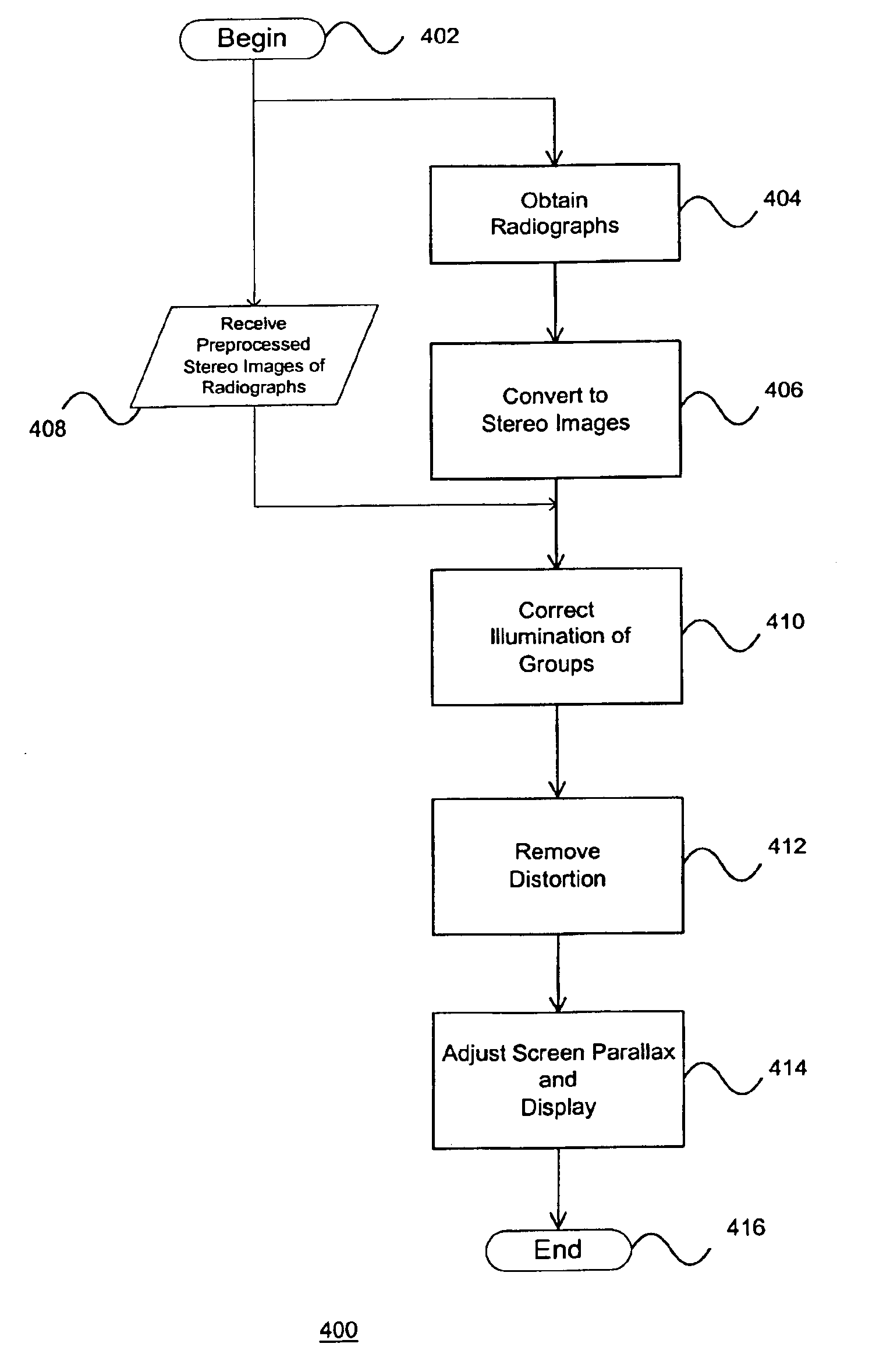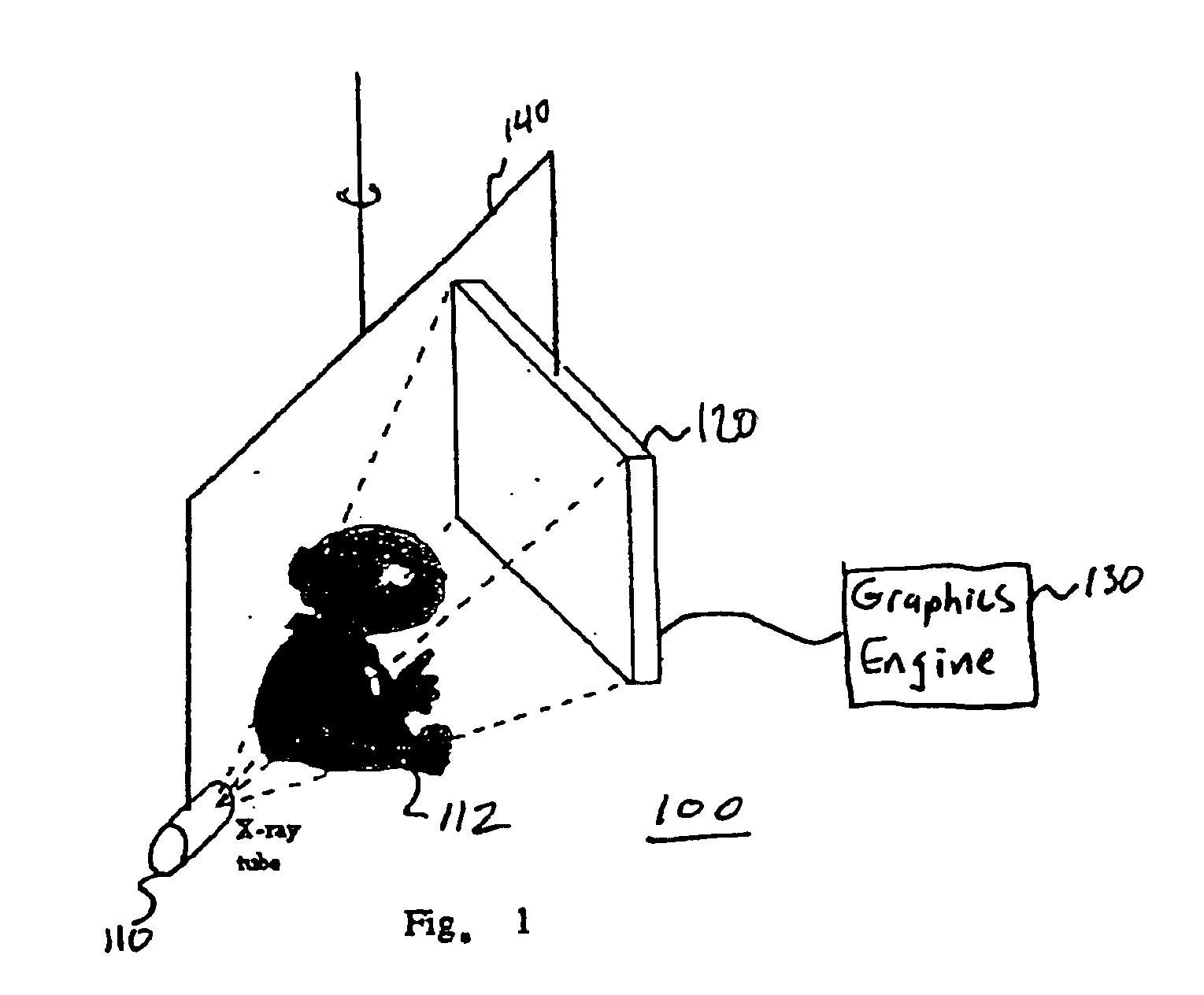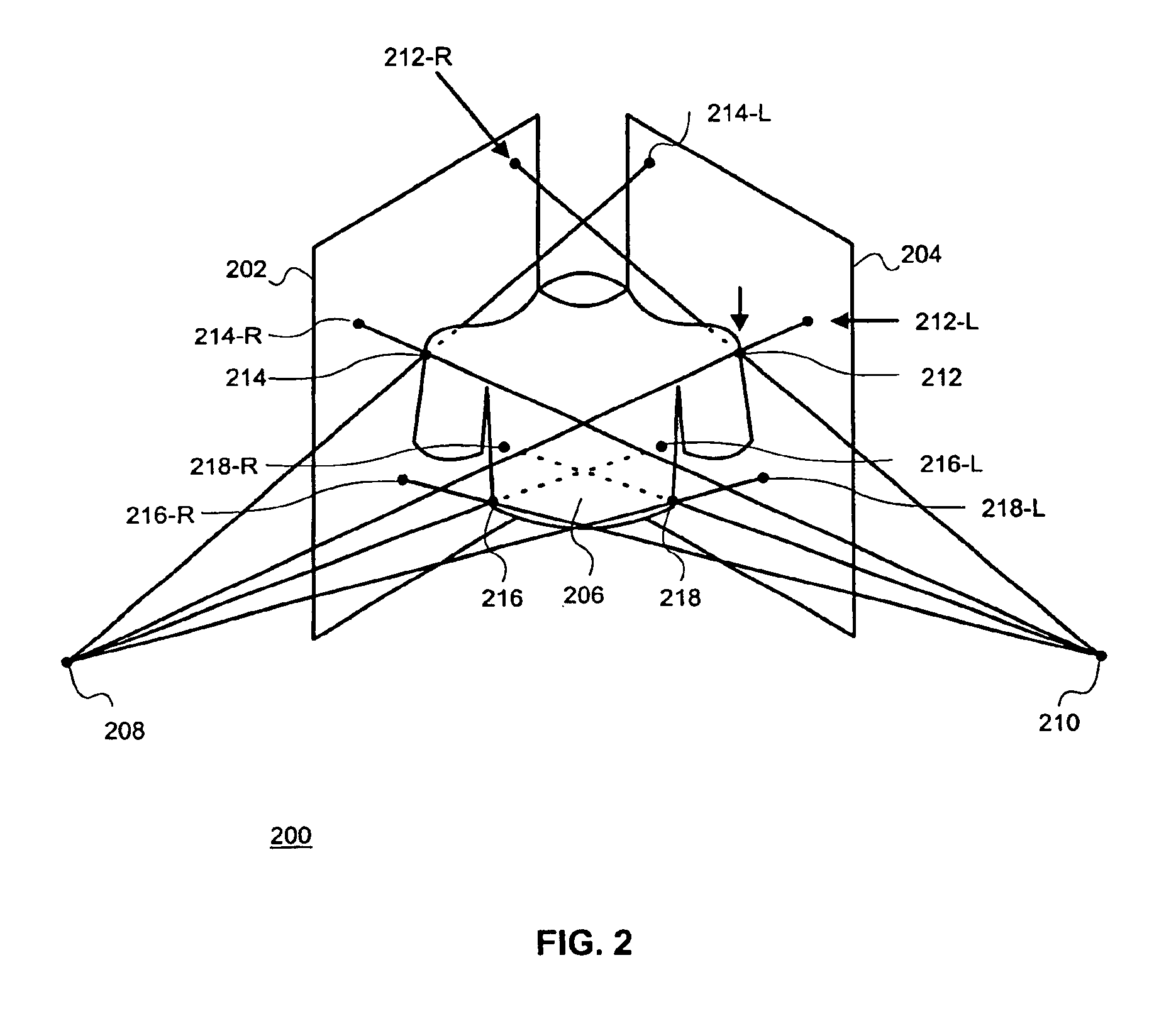Stereo image processing for radiography
a stereo image processing and radiography technology, applied in the field of three-dimensional imaging and analysis, can solve the problems of difficult implementation of binocular x-ray imaging, many missed information in conventional x-ray diagnostic and interventional procedures, and relatively fast methods, so as to reduce and eliminate illumination errors, remove keystone distortion, and reduce the effect of reducing and eliminating illumination errors
- Summary
- Abstract
- Description
- Claims
- Application Information
AI Technical Summary
Benefits of technology
Problems solved by technology
Method used
Image
Examples
Embodiment Construction
The present invention is directed to a system, method and computer readable medium for stereoscopic image processing that improves the image quality and depth perception of stereoscopic radiographs obtained with imaging devices. The method of the present invention includes a three step process. In the first step, the illumination of X-ray stereo pairs is adjusted to alleviate the illumination differences therebetween. In particular, the illumination of pixels in vertical columns for the pair of images is adjusted by equalizing the mean and standard deviation of these pixels. That is, upon calculating the mean and standard deviation in the vertical columns of the pixels, histograms are then adjusted to equalize the illumination. With the second step, the method of the present invention converts the toed-in stereoscopic X-ray images into a pair of images that are in the same plane, that is, both images being parallel with the surface of the display device and with the base line betwee...
PUM
 Login to View More
Login to View More Abstract
Description
Claims
Application Information
 Login to View More
Login to View More - R&D
- Intellectual Property
- Life Sciences
- Materials
- Tech Scout
- Unparalleled Data Quality
- Higher Quality Content
- 60% Fewer Hallucinations
Browse by: Latest US Patents, China's latest patents, Technical Efficacy Thesaurus, Application Domain, Technology Topic, Popular Technical Reports.
© 2025 PatSnap. All rights reserved.Legal|Privacy policy|Modern Slavery Act Transparency Statement|Sitemap|About US| Contact US: help@patsnap.com



